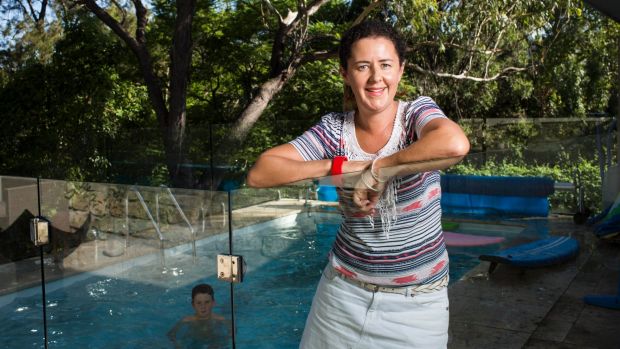Airconditioners and clothes dryers are notorious for eating up energy. But there's one household appliance that can bump up power bills by four figures, without home owners realising just how much electricity is being used.
High electricity bills came as a shock to Cate Bacon after she moved into her Castle Cove home five years ago.
More Tech Talk Videos
Standby power: our worst home appliances
Even when turned off, standby power means these devices continue to guzzle alarming amounts of electricity.
"I do remember moving in and thinking, 'Wow'," she said. "But is it really expensive because we've got a bigger house, or because we've got a pool as well?"
Running a pool pump six hours a day in summer and four hours a day in winter can add up to $1556 a year, according to an analysis by comparison site finder.com.au, which found the average annual electricity bill for a four-person household without a pool in Sydney is $2063.
Australia has the highest pool ownership per capita in the world. For many owners, running the pump and filter at night when electricity is cheaper is not an option because of the noise they generate.
The Bacons use a pool cover to cut down on evaporation and recently switched to electricity-generating solar power.
Mrs Bacon estimates they are already saving about $100 a month. An app helps them monitor their power use for different appliances.
"It's amazing how much the pool's using," Mrs Bacon said, adding that many pool owners would "have no idea how much it costs".

"I think they just pay the bills that come in and they wouldn't really know what portion of that goes into the pool," she said.
"They set it and forget it the whole year; they're unnecessarily spending all this money on it.

"People really need to do quite a lot of research when they have a pool. You could save a fortune."
With the imminent closure of Victoria's coal-fired Hazelwood power station set to push up electricity prices, and electricity generation accounting for 35 per cent of Australia's greenhouse gas emissions in 2016, there are good reasons to be more energy efficient.

"Over a year, a pool pump running 24 hours a day can produce as much greenhouse gas as a large car," Angus Kidman, editor-in-chief of finder.com.au, said.
Using a pool cover, ensuring the pump is suitable for the volume of the pool, adjusting the filtration timing and changing the setting to a slower speed can all help cut costs, he said.
Pool pumps are not the only things chewing up energy unnoticed in the home. Standby power use accounts for almost 6 per cent of Australia's total residential electricity consumption, costing consumers $860 million a year and producing almost 2.6 million tonnes of carbon dioxide emissions.
Mr Kidman said "anything that has a standby option is slowly eating away at your electricity. Although these are only minute amounts, it's electricity that you don't need to be spending your money on. Instead, turn things off at the power point once you've finished using them."
A survey by finder.com.au found Australians spend $117 million on wasted energy per year, by boiling a full kettle when they only need enough water for one cup of tea or coffee.
"Heating appliances are renowned for their appetite for energy," Mr Kidman said. "Aussies could potentially save around $88 million a year if they only boiled what they needed."
Using multiple devices at home also adds up.
"Most of the time we watch TV whilst browsing through Facebook on our tablets, while our children sit playing on their laptop or flick through Instagram on their smartphones," Mr Kidman said. "All of these devices, although small, are using electricity, and if they're connected via Wi-Fi they'll be using more."

















16 comments
New User? Sign up